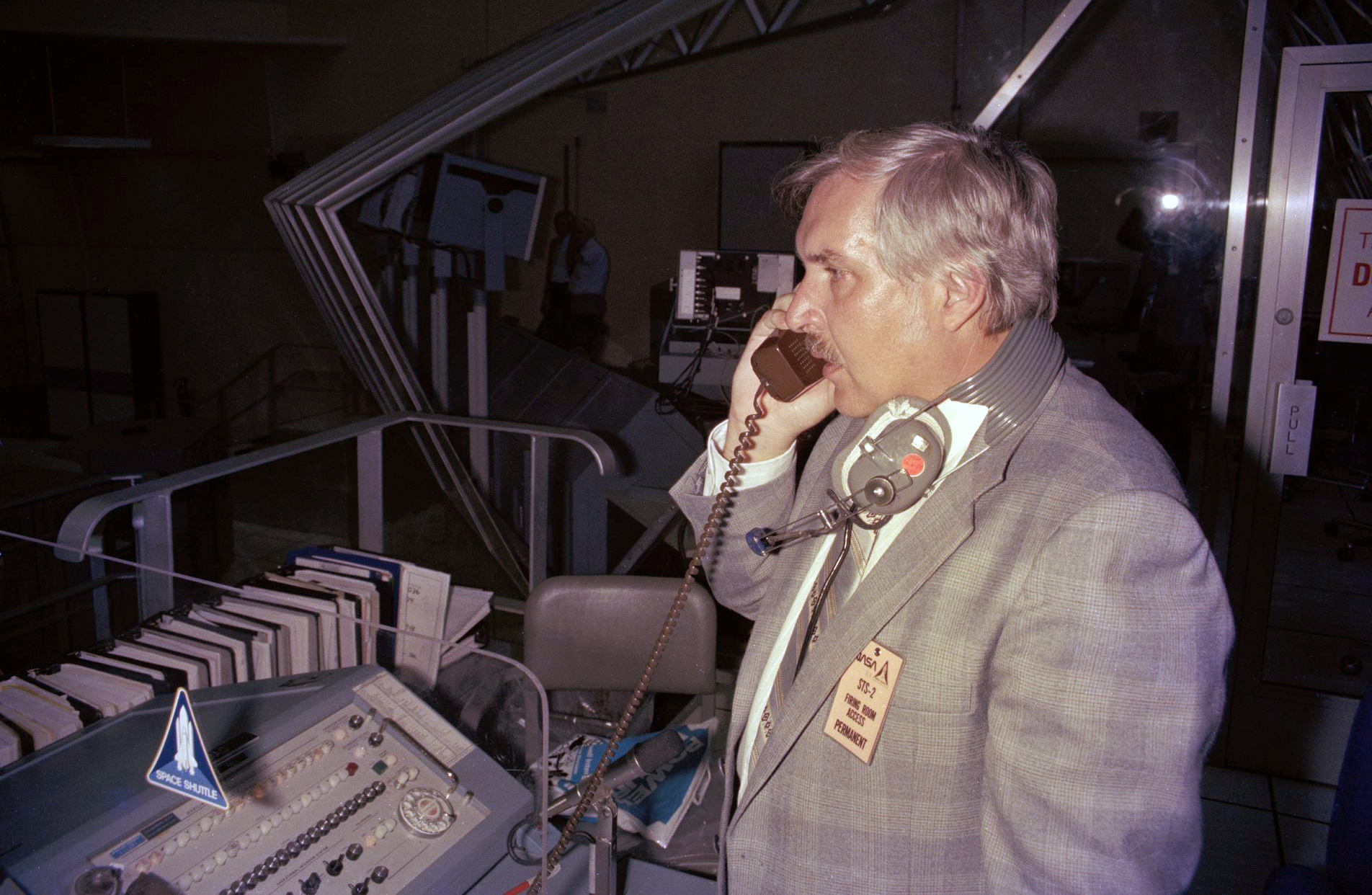In 1962 Hugh Harris applied for a position in NASA’s Lewis Research Center’s Public Information Office hoping to hone his media skills for a year or so before returning to private industry. Instead, it was the start of 60-year association with the agency that included international recognition for his public broadcasts during space shuttle launches.
Harris became interested in public speaking as a youth while volunteering at a Cleveland area radio station and went on to write and produce radio shows during high school. This early experience led to a civil service position as a media specialist at the age of 18 while he was studying speech and dramatic arts at Western Reserve University. Harris was inducted into the army in 1952. During the Korean War, he was deployed to Germany where he utilized his talents as a military reporter and broadcaster.
Harris returned to Cleveland after the war and completed his undergraduate degree in 1956. He subsequently studied playwriting at Columbia University while working as a radio reporter in New Jersey. He moved on to newspaper reporting and returned to Cleveland in the early 1960s to write for the Standard Oil Company. After a wave of layoffs in 1962, Harris applied at NASA Lewis. In February 1963 Harris was hired as a public information specialist.
NASA was in the headlines at the time with its Project Mercury missions and the first flyby of Venus. Locally, Lewis had just been assigned responsibility for the Centaur and Agena upper-stage rockets and was dramatically expanding its workforce and facilities to support the nation’s space program. A key tenet of NASA’s mission is keeping the public informed of its activities.
Harris was responsible for writing materials for newspapers, magazines, radio, television, and motion pictures. In addition, he was sent on extended trips across the country to recruit people to fill the hundreds of new positions at the center. In 1964 he assisted with NASA’s elaborate exhibit at the World’s Fair in New York City.
Harris was often present for the Agena and Centaur launches. Kennedy Space Center (KSC) had a representative broadcast countdown updates and related information to the press during many of the launches. As the frequency of launches grew in the early 1960s, he found himself filling in on the Lewis-managed launches. Harris diligently prepared for each launch, meeting with the launch team and studying the mission objectives. He provided the countdown commentary for Surveyor missions and dozens of other launches.
In 1968, Harris was named chief of Lewis’ Public Information Office. In addition to his other activities, he was responsible for coordinating all of Lewis’ outreach activities, including tours, the center newsletter, and press releases. He wrote a series of 20 half-hour television shows highlighting NASA and other Cleveland area federal agencies, and helped plan events such as the center’s elaborate Technology in the Service of Man event in 1973.
In July 1969, Harris spent several weeks at the Johnson Space Center assisting staff with media communications during the slow periods of the Apollo 11 mission. As the schedule shifted, he unexpectedly found himself as Mission Control’s primary link to the outside world as Neil Armstrong and Buzz Aldrin stepped onto the lunar surface. Harris helped analyze the garbled audio to ensure the first words on the Moon were correctly noted.
Despite the continued success of the Centaur Program, Lewis underwent major reductions and shifts in research areas in the 1970s. In 1975, Harris decided to accept a public affairs position at KSC. A former Centaur engineer recalled, “I thought it was a great opportunity for him, but a big loss for Lewis.”
Harris’ experience with the Centaur and Agena launches led to his providing launch commentary for the first shuttle launches in the early 1980s. As he had at Lewis, Harris prepared for each launch by studying the shuttle procedures and working on mock countdowns with the launch team. His communications from Shuttle Launch Control for the first 25 shuttle flights led to his being dubbed “The Voice of NASA.”
Harris, however, pushed back against this designation and assembled a small team which rotated launch assignments. Nonetheless, Harris provided commentary for 90 shuttle launches and played a critical role during the Challenger accident.
In 1985, Harris was named deputy director of Kennedy’s Public Affairs Office. He helped manage all of the center’s public affairs and educational activities involving the general public, schools, businesses, and the media. Harris also supervised the construction of Kennedy’s Apollo/Saturn V Center and initiated an honor roll for spaceflight journalists.
Harris retired in 1998 but remained active over the years as a public speaker and NASA volunteer. Harris passed away in February 2023 at age 90.
Robert S. Arrighi
NASA Glenn Research Center




























